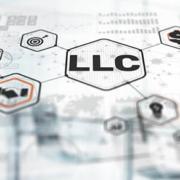As the end of the year draws near, savvy taxpayers look for ways to reduce their tax bills. This year, the sense of urgency is higher for many because of some critical factors.
Indeed, many of the Tax Cuts and Jobs Act provisions are set to expire at the end of 2025, absent congressional action. However, with President-Elect Donald Trump set to take power in 2025 and a unified GOP Congress, the chances have greatly improved that many provisions will be extended or made permanent. With these factors in mind, here are tax-related strategies to consider before year end.
Bunching itemized deductions
For 2024, the standard deduction is $29,200 for married couples filing jointly, $14,600 for single filers, and $21,900 for heads of households. “Bunching” various itemized deductions into the same tax year can offer a pathway to generating itemized deductions that exceed the standard deduction.
For example, you can claim an itemized deduction for medical and dental expenses that are greater than 7.5% of your adjusted gross income (AGI). Suppose you’re planning to have a procedure in January that will come with significant costs not covered by insurance. In that case, you may want to schedule it before year end if it’ll push you over the standard deduction when combined with other itemized deductions.
Making charitable contributions
Charitable contributions can be a useful vehicle for bunching. Donating appreciated assets can be especially lucrative. You avoid capital gains tax on the appreciation and, if applicable, the net investment income tax (NIIT).
Another attractive option for taxpayers age 70½ or older is making a qualified charitable distribution (QCD) from a retirement account that has required minimum distributions (RMDs). For 2024, eligible taxpayers can contribute as much as $105,000 (adjusted annually for inflation) to qualified charities. This removes the distribution from taxable income and counts as an RMD. It doesn’t, however, qualify for the charitable deduction. You can also make a one-time QCD of $53,000 in 2024 (adjusted annually for inflation) through a charitable remainder trust or a charitable gift annuity.
Leveraging maximum contribution limits
Maximizing contributions to your retirement and healthcare-related accounts can reduce your taxable income now and grow funds you can tap later. The 2024 maximum contributions are:
- $23,000 ($30,500 if age 50 or older) for 401(k) plans.
- $7,000 ($8,000 if age 50 or older) for traditional IRAs.
- $4,150 for individual coverage and $8,300 for family coverage, plus an extra $1,000 catch-up contribution for those age 55 or older for Health Savings Accounts.
Also keep in mind that, beginning in 2024, contributing to 529 plans is more appealing because you can transfer unused amounts to a beneficiary’s Roth IRA (subject to certain limits and requirements).
Harvesting losses
Although the stock market has clocked record highs this year, you might find some losers in your portfolio. These are investments now valued below your cost basis. By selling them before year end, you can offset capital gains. Losses that are greater than your gains for the year can offset up to $3,000 of ordinary income, with any balance carried forward.
Just remember the “wash rule.” It prohibits deducting a loss if you buy a “substantially similar” investment within 30 days — before or after — the sale date.
Converting an IRA to a Roth IRA
Roth IRA conversions are always worth considering. The usual downside is that you must pay income tax on the amount you transfer from a traditional IRA to a Roth. If you expect your income tax rate to increase in 2026, the tax hit could be less now than down the road.
Regardless, the converted funds will grow tax-free in the Roth, and you can take qualified distributions without incurring tax after you’ve had the account for five years. Moreover, unlike other retirement accounts, Roth IRAs carry no RMD obligations.
In addition, Roth accounts allow tax- and penalty-free withdrawals at any time for certain milestone expenses. For example, you can take a distribution for a first-time home purchase (up to $10,000), qualified birth or adoption expenses (up to $5,000 per child) or qualified higher education expenses (no limit).
Timing your income and expenses
The general timing strategy is to defer income into 2025 and accelerate deductible expenses into 2024, assuming you won’t be in a higher tax bracket next year. This strategy can reduce your taxable income and possibly help boost tax benefits that can be reduced based on your income, such as IRA contributions and student loan deductions.
If you’ll likely land in a higher tax bracket in the near future, you may want to flip the general strategy. You can accelerate income into 2024 by, for example, realizing deferred compensation and capital gains, executing a Roth conversion, or exercising stock options.
Don’t delay
With the potential for major tax changes on the horizon, now is the time to take measures to protect your bottom line. We can help you make the right moves for 2024 and beyond.
© 2024












